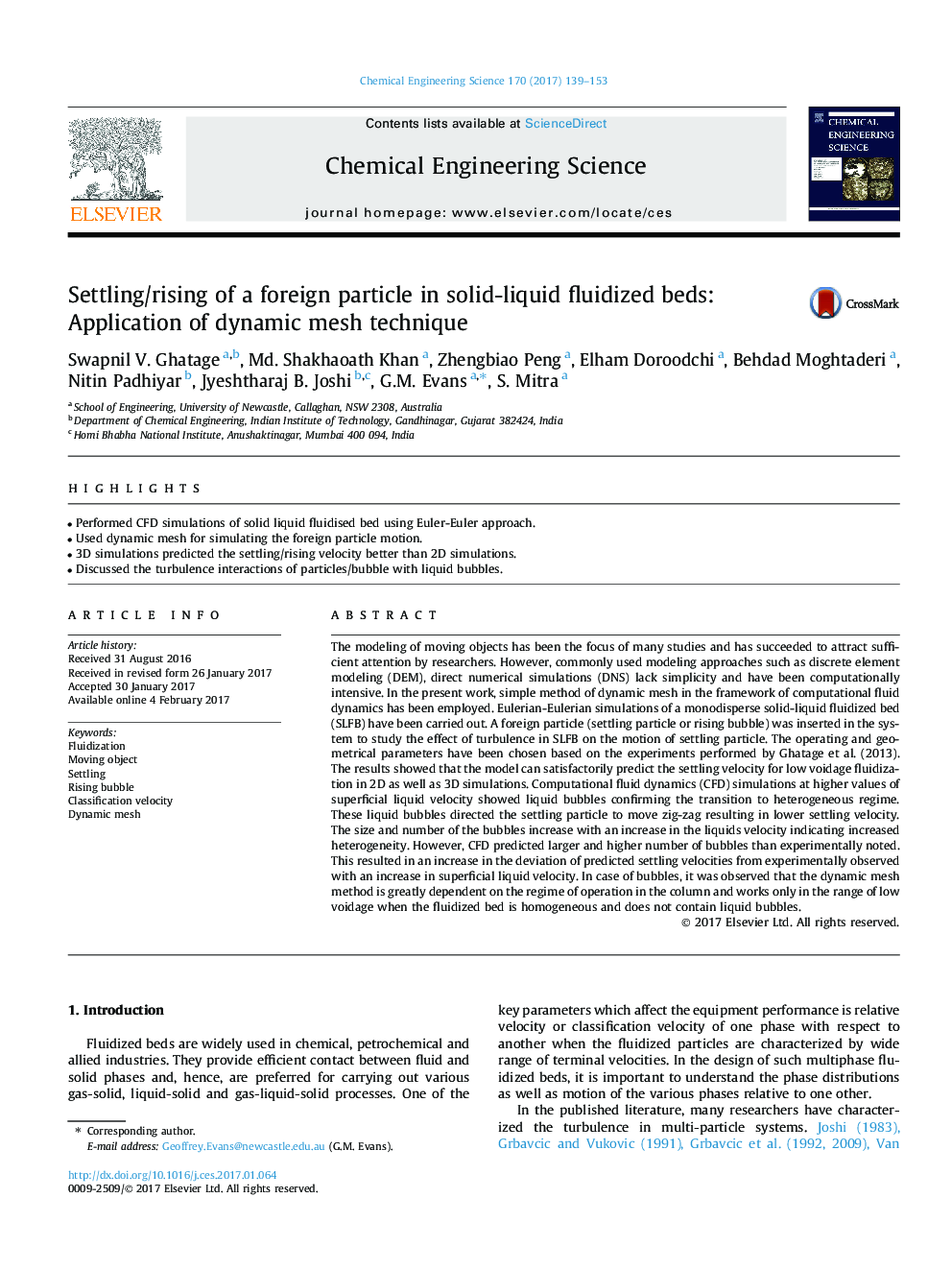| Article ID | Journal | Published Year | Pages | File Type |
|---|---|---|---|---|
| 6467210 | Chemical Engineering Science | 2017 | 15 Pages |
â¢Performed CFD simulations of solid liquid fluidised bed using Euler-Euler approach.â¢Used dynamic mesh for simulating the foreign particle motion.â¢3D simulations predicted the settling/rising velocity better than 2D simulations.â¢Discussed the turbulence interactions of particles/bubble with liquid bubbles.
The modeling of moving objects has been the focus of many studies and has succeeded to attract sufficient attention by researchers. However, commonly used modeling approaches such as discrete element modeling (DEM), direct numerical simulations (DNS) lack simplicity and have been computationally intensive. In the present work, simple method of dynamic mesh in the framework of computational fluid dynamics has been employed. Eulerian-Eulerian simulations of a monodisperse solid-liquid fluidized bed (SLFB) have been carried out. A foreign particle (settling particle or rising bubble) was inserted in the system to study the effect of turbulence in SLFB on the motion of settling particle. The operating and geometrical parameters have been chosen based on the experiments performed by Ghatage et al. (2013). The results showed that the model can satisfactorily predict the settling velocity for low voidage fluidization in 2D as well as 3D simulations. Computational fluid dynamics (CFD) simulations at higher values of superficial liquid velocity showed liquid bubbles confirming the transition to heterogeneous regime. These liquid bubbles directed the settling particle to move zig-zag resulting in lower settling velocity. The size and number of the bubbles increase with an increase in the liquids velocity indicating increased heterogeneity. However, CFD predicted larger and higher number of bubbles than experimentally noted. This resulted in an increase in the deviation of predicted settling velocities from experimentally observed with an increase in superficial liquid velocity. In case of bubbles, it was observed that the dynamic mesh method is greatly dependent on the regime of operation in the column and works only in the range of low voidage when the fluidized bed is homogeneous and does not contain liquid bubbles.
